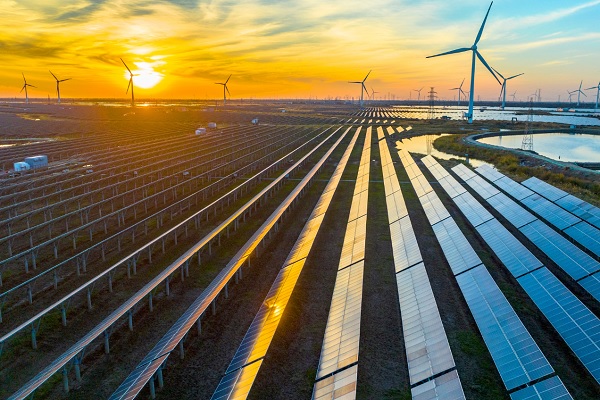
Research published revealed that China is constructing nearly twice as much wind and solar energy capacity as all other countries combined. As the world's second-largest economy, China is also the largest emitter of greenhouse gases, which contribute to climate change. The country has pledged to peak its carbon emissions by 2030 and achieve net zero by 2060. Recent months have seen China experience several waves of extreme weather, which scientists attribute to the exacerbating effects of climate change.
Currently, China has 339 gigawatts (GW) of wind and solar capacity under construction, comprising 159 GW of wind and 180 GW of solar. This amount is almost double the capacity being built by the rest of the world combined, according to a study by the US-based NGO Global Energy Monitor. In comparison, the United States, which ranks second, is constructing just 40 GW of capacity. China has commenced construction on a third of its announced new wind and solar projects, significantly higher than the global average of seven percent. The study highlights this disparity as evidence of China's active commitment to expanding renewable energy projects.
Despite this impressive buildout, China's reliance on heavily polluting coal plants to meet surges in power demand remains a challenge. Additionally, the country faces difficulties in transmitting renewable energy from the remote northwestern regions to the more populous and economically active eastern regions. Nevertheless, the report indicates that China's combined wind and solar capacity is set to surpass coal this year. This rapid expansion in renewables raises the possibility that China's carbon emissions might peak earlier than anticipated.
In another report released on Thursday, the Centre for Research on Energy and Clean Air (CREA) noted that China issued no new permits for coal-based steelmaking projects in the first half of 2024. This marks the first time since China announced its "dual carbon goals" in September 2020 that no new permits have been granted on a half-yearly basis. CREA hailed this development as a potential "turning point." The report suggests that as China's demand for steel peaks and more scrap becomes available, there is significant potential to move away from coal-based production, offering a substantial opportunity for emissions reduction over the next decade.
Scientists warn that global warming is leading to more frequent and intense extreme weather events. This summer, China has faced extreme heat in the north and heavy rains in the south. The national weather agency recently forecasted that very high temperatures are expected to continue in the coming weeks due to the ongoing impacts of climate change.